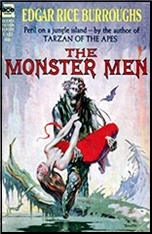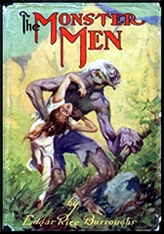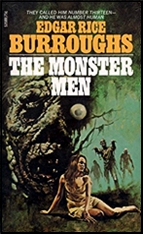FIRST YOU READ, THEN YOU WRITE
by Francis M. Nevins
Anyone remember John Roeburt? My hunch is that few do even if they’re regular readers of this column. I believe he first swam into my ken in the late 1950s, when I was a teen and he was story editor and occasional scriptwriter for NBC-TV’s THE FURTHER ADVENTURES OF ELLERY QUEEN (1958-59), starring George Nader and later Lee Philips.
Being heavily into EQ at that time, I made it a point to check out this Roeburt guy and found several of his novels at my friendly neighborhood used book store. Prices were unbelievable back then: you could buy a hardcover for a quarter, a paperback for a dime. I picked up all the Roeburt I could find but, and weirdo that I am, read few if any of his books. Recently I decided he might be a good subject for a column and pulled down a few of his early novels from my shelves. Was I right? You tell me.

A New Yorker from square one, Roeburt was born on March 15, 1909. At least one website claims that, like myself, he graduated from NYU Law School, probably during the pit of the Depression, but neither the Law School Alumni Office nor the Registrar’s Office has been able to confirm this.
If he was an attorney, we don’t know whether he ever practiced law. Most of his career as a writer he spent in radio and later TV but he did turn out a book every few years. Outside the crime genre he’s best known for EARTHQUAKE (1959), a mainstream novel nominally written by TV comic Milton Berle and himself.
This book had nothing in common with the 1974 Big Disaster movie of the same name, co-scripted by Mario Puzo and starring Charlton Heston, Ava Gardner, George Kennedy and Lorne Greene, with special effects out the wazoo. Titles aren’t copyrightable but theoretically Berle and Roeburt could have sued on a claim of unfair competition.
However, to succeed on that basis you have to establish that your title has developed a secondary meaning, i.e. it’s identified with you in the public mind the way, say, TO KILL A MOCKINGBIRD is identified with Harper Lee. In any event there was no such suit and Roeburt wasn’t around to bring it. He had died of a heart attack on May 22, 1972 at his summer home on Fire Island.

His first novel, JIGGER MORAN (Greenberg, 1944), which I picked up for a cool quarter back in my teens, is hard to classify. On the surface it’s a Mean Streets thriller in the Raymond Chandler tradition (although without first-person narration), but every so often it tries futilely to break out of its hardboiled mold and enter the mainstream, abandoning its protagonist for a few pages now and then, even offering a flashback to the childhood of one of the other principals.
Jigger, whom one can easily imagine being played on the big screen by Bogart, is nominally a cab driver but actually an amoral “fixer†with both a Ph.D. and a law school diploma, which Roeburt insists on calling a degree De Juris. (This is both bad Latin and dead wrong: in Roeburt’s time what you got when you graduated from a law school was called an Ll.B., for Bachelor of Laws, although by my own graduation year, 1967, the name had been changed to J.D., for Juris Doctor. In any event, the second Moran novel tells us that he’s been disbarred for years.)
Numbers racket kingpin Little Joey, whom one can easily imagine being played by Edward G. Robinson, hires Moran to clear him of the murder of a German-American doctor who apparently won a huge amount of money from Joey’s organization not long before he was found battered almost beyond recognition in his Yorkville home office. The trail leads Jigger to the usual zoo of lowlifes — including a psychotic whose wife died after a botched abortion at the doctor’s hands and several pseudo-intellectual leftists from Greenwich Village — and ultimately to a Nazi propaganda mill.
What makes JIGGER MORAN stand out from the usual tough-guy thriller is that it’s studded with lines of the sort Bill Pronzini in an inspired phrase has called “alternative flapdoodle.†I’ll quote just a few, complete with page references so no one will think I’m making this stuff up:

Jigger gave the cherchez la femme faucet a quarter-inch twist….(35)
Jigger thrust a nail-file through a crack in Wang’s double-decker subtleties as a reminder that the good doctor had two strikes on him and Jigger was pitcher and umpire both. (129)
Jigger pummeled his way through the mob cacaphonizing at Johnny’s bar…. (133)
“Used to be a ranking sluggerdutch from Chicago.†(139)
The office girl squared her breasts as Jigger zipped past…. (201)
[H]e looked like a man jumping out of his skin. (208)
Roeburt uses a number of throwaway references to evoke the 1944 atmosphere but they don’t always work. The Euro-café filled with “Viennese refugees who took fright with the bullet that reduced Dolfuss to a footnote in history†(209) is okay if the reader remembers that Engelbert Dollfuss (with two l’s), chancellor of Austria, had been shot by the Nazis in 1934.
But what about Jigger’s prediction that he and a certain cop “will be principals in a rewrite of the Becker-Rosenthal case†(189)? Personally I don’t feel like going online to track down that ancient case, and I suspect very few readers would have wanted to do it back in that cenozoic era before the Web.
Roeburt does even worse when he ventures onto religious turf. The well-known Catholic apologist and 1950s TV personality Fulton Sheen morphs in his hands into “Monsignor Sheean†(209), but that’s a mere bag of shells beside the unforgettable reference to “the St. James version of the Old Testament†on the same page!
JIGGER MORAN was reprinted twice after its hardcover appearance: as THE CASE OF THE TEARLESS WIDOW (HandiBooks pb #46, 1946) and as WINE, WOMEN AND MURDER (Avon pb #807, 1958). I don’t have either of these editions and don’t know whether Roeburt cleaned up any of the wacko lines from the original but, as we’ll see shortly, there’s reason to believe he might have.

One notices a certain cousinly resemblance between the beginning of JIGGER MORAN and that of Roeburt’s follow-up novel, THERE ARE DEAD MEN IN MANHATTAN (Mystery House, 1946). Jigger is pulled out of a crap game in a nightclub kitchen by Dixie Travers, a gangster driven out of New York and now holed up across the Hudson in Jersey City, and offered a large fee if he’ll clear up a murder.
This time, however, the gangster himself is not under suspicion. The guy in the shadow of the hot seat is Blaine Fowler, who’s on trial for the murder of his mistress and almost certain to be convicted. Why does Travers care? Because, he says, Fowler owes him $50,000 in gambling debts and can’t pay up if he fries.

Soon after Jigger takes the case, one of the Fowler jurors is (non-fatally) poisoned, a mistrial is declared and Fowler is released on bail. (Yeah, right.) Next someone tries to shoot the poisoned juror in his hospital bed, and Jigger finds himself in the thick of a conspiracy involving, among other notables, the DA who put Fowler on trial. Not only is our hero beaten to a pulp, which is par for the course in vintage PI novels, but he also gets scalped, which I think makes him unique in the tough-guy genre.
In his review for the San Francisco Chronicle (March 17, 1946) Tony Boucher called the book “a highly individual and effective variant on the hardboiled school†despite its employment of “one of the oldest cliché solutions….†No, the murderer is not a woman Jigger has had sex with. Through the pages of this caper he remains chaste. Who’d want sex with a scalped man anyway?

Various plot components make it clear that Raymond Chandler and especially FAREWELL, MY LOVELY (1940) were very much on Roeburt’s mind at the time: witness the Moose Malloy-like hulk who administers the scalping to Jigger, and the phony sanitarium in the later chapters. The weirdo lines that marked JIGGER MORAN are fewer in number this time around but just as flapdoodlesque:
“Christy… doormanned lugubriously, tallying all incoming customers with a clockometer.†(19) “Fowler can-canned his bottom to the edge of the bunk and his feet touched the floor.†(44) In the abridged paperback edition of DEAD MEN, which I happen to have (Graphic pb #42, 1951), the first of these howlers is cut completely and the second is toned down to the conventional “Fowler sat up in his bunk and swung around.â€
It’s revisions like these that lead me to suspect that if we had one or both of the paperback editions of JIGGER MORAN we’d find similar instances of — if I may perpetrate my own Roeburtism — second-thoughting.

In the third and final Jigger Moran novel, CORPSE ON THE TOWN (Graphic pb #27, 1950), Roeburt dispenses with weirdo lines except for one or two like “Jigger smiled a shot of Vitamin W†(37). This time around the track we get much more dialogue — which is natural considering that so much of his writing took the form of radio drama — plus the only opening scene in any of the three that can reasonably be called noirish.
On a rain-soaked evening, Jigger drops off a passenger in front of an apartment building on Greenwich Village’s Charlton Street and is about to turn in his cab and call it a night when a stranger he can barely see asks him to deliver a trunk to the Railway Express office near Penn Station, offering a fee of five bucks, which in 1950 was a princely sum for a short haul.
On 31st Street he’s cut off by four cops in official cars and forced to accompany them to the police garage, where the trunk is taken off his cab and found to contain the body of a young woman, battered beyond recognition. The trail leads him to a wealthy upstate New York family, a police chief with a murderous streak, a professor of creative writing who was mentoring the dead woman, a red-bearded Greenwich Village artist with a penchant for blackmail and all sorts of other pungent characters.
Since the book was published as a paperback original it was reviewed nowhere, not even in the New York Times, although if it had appeared a couple of years later Tony Boucher would certainly have covered it in his “Criminals at Large” column, which began in July 1951.

What Tony would have said we’ll never know. Personally I found the book sort of confusing for a number of reasons, for instance the will that Roeburt summarizes for us in Chapter Nine:
Wealthy grandmother disinherited her son and left most of her estate to her granddaughter provided she gets married before she turns 21. Would a court have found that provision contrary to public policy and void? One would expect that if Roeburt were a lawyer he’d at least bring up the issue but not a single word is said about it.
The granddaughter did get married before turning 21 but her husband was also her first cousin. Is that legal? It is in New York today and presumably was back in 1950. But suppose she gets married before age 21 and then dies? We are told that “the old lady didn’t think to insure against such a contingency.â€
Well, duh! You don’t have to be a law school graduate to know that in that event the estate goes wherever the granddaughter’s will says it goes or, if she didn’t leave a will, to her nearest relatives by intestate succession.
There are other sources of confusion too but it would be boring to harp on them.
Several years after the novel’s first appearance, a new version was published as CASE OF THE HYPNOTIZED VIRGIN (Avon pb #730, 1956), whose front cover informs us in small print that it was “based on†CORPSE ON THE TOWN. The main difference between the two titles is that in 1956 Roeburt inserted several hundred words of new material about hypnosis and reincarnation, obviously designed to cash in on the then wildly popular book THE SEARCH FOR BRIDEY MURPHY. The additions were no improvements.
Three Roeburts in one column is quite enough. If I decide to talk about his other books — notably TOUGH COP (1949) and THE HOLLOW MAN (1954), both featuring Johnny Devereaux, and the stand-alone crime novels THE LUNATIC TIME (1956) and THE CLIMATE OF HELL (1958), not to mention his countless scripts for radio and TV — it will have to be on another occasion. Probably not next month. If I may quote the “Send In the Clowns†song, maybe next year.



